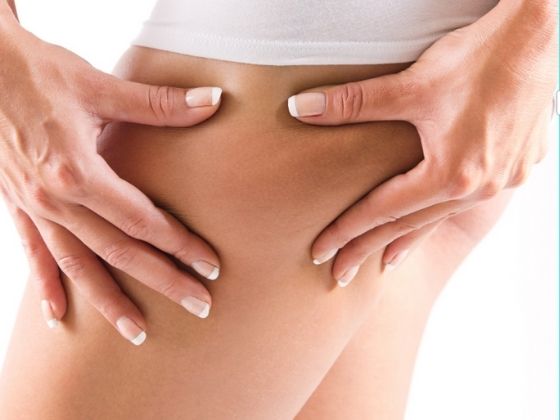The cellulite process is complicated and, although it is suffered by the majority of women, 90%! Few of us know how it is formed and what type of cellulite we have. Cellulite is a complex process, which has several phases, directly related to the type of cellulite. Depending on what phase we are in, it will be more or less difficult to reduce it effectively.
With this post we want you to understand how cellulite is produced and you can identify what phase you are in, as well as identify each phase with the type of cellulite (edematous, soft, hard)
The four phases of cellulite are: interstitial edema, exudative, fibrosis, and sclerosis.
1. Edema phase
It all starts with fluid retention in the extracellular or interstitial space. Increased intracapillary pressure leads to increased capillary permeability.
What does this mean?
It translates into a fluid leak, which produces edema and fluid retention, producing a lymphatic overload, which prevents this excess from being reabsorbed.
This type of cellulite is not usually seen with the naked eye, but yes, if we squeeze the skin and dimples appear.

2. Exudative phase
As fluids accumulate outside the vascular space, there is also an escape of high molecular weight proteins into the interstitial environment in the connective tissue. A state of intracapillary hyperpressure is produced, responsible for the weakening of the vascular walls.
What does this mean?
An inflammatory-type reaction occurs, as aggressive substances (histamine, serotonin and prostaglandins) are released.
This stage is also known as edematous cellulite.

3. Fibrosis phase
Protein excesses produce fibroplastic stimulation, which causes the formation of a collagen network or fibrous septa that encompasses and compresses adipocytes (fat cells)
Adipocytes hypertrophy, and cannot adequately perform metabolic exchanges
What does this mean?
The adipocytes become larger, and thus form first micronodules and later macronodules enclosed in conjunctival fibers, being identifiable by palpation (they are noticeable to the touch).
This type of cellulite is also known as soft cellulite.

4. Sclerosis phase
The evolution of the above problems leads to a situation of hardening and thickening of the fibrous structures, which usually compress the nerve endings, and a vicious circle of vascular and tissue decompensation is closed.
What does this mean?
Cellulite becomes painful, and it gets progressively worse because it is a vicious circle with more and more edema, more damaged micro-circulation, more hypertrophy of the adipocytes.... This means that it will progressively become harder and more difficult to treat.
This type of cellulite is also known as hard cellulite or fibrous cellulite.

As we can see in this image that represents the skin, when the skin bulges forming the typical "orange peel" it is because all these changes that we have just explained take place underneath.
1. Adipocytes increase in size and produce bulging of the skin. They are hardening.
2. Micro-circulation becomes inflamed and imprisoned, edema occurs.
3. Collagen fibers, which join the skin to the muscle, lose their elasticity and become rigid, pulling the skin inward (they form the typical "dimples" of celluliteSkin with and without cellulite

Cellulite treatment must be adapted to the characteristics of each type or phase of cellulite.
To improve it, you should always look for a treatment that meets these requirements:
1. Get to act in the depth where the problem is located, that is why merely cosmetic treatments usually do not work by themselves.
2. Act breaking the vicious circle that cellulite forms. To do this, it must be able to mobilize fluid retention, break down fat (nodules) and stimulate tissue that has lost elasticity.
3. It must allow us to be CONSISTENT in the treatment, so as not to go back and achieve real and lasting results.
4. In the phases where the cellulite is really hard (type IV-V), that is, the adipocytes have hypertrophied so much that they are like stones, only surgery can break the fibrous and hard tissue that surrounds it. In earlier phases, there are several effective treatments, both professional (such as the anti-cellulite massage performed by expert hands) and domestic (Glo910 anti-cellulite massager).
Professional and home treatments can also be combined.
5. Micro-nutrients can also be of great use in helping us get rid of cellulite from within.
For example:
- Omega-3 DHA oil improves cell health and elasticity, and reduces inflammation.
- The registered brand hydrolyzed marine collagen has clinical studies that certify its effectiveness when it comes to recovering connective tissue (reducing dimples) typical of cellulite that appears after 45 years of age.
- There are specific products to stimulate fat burning, such as Selulit de Glo. a vegan and natural nutricosmetic that favors its elimination from the inside.












